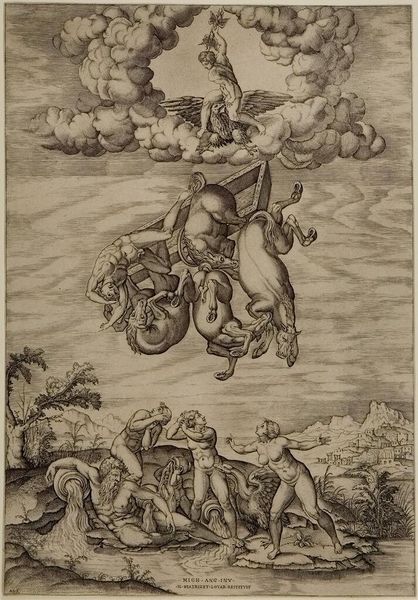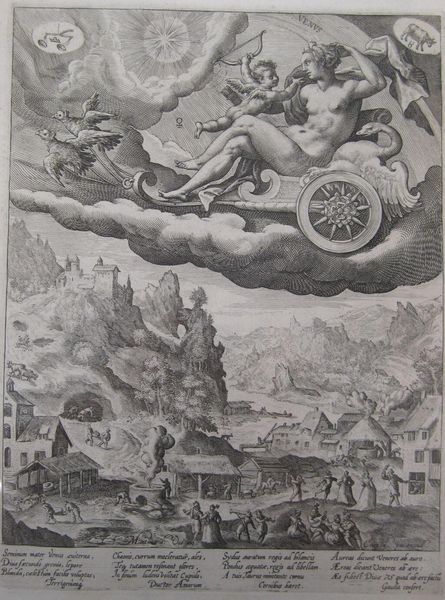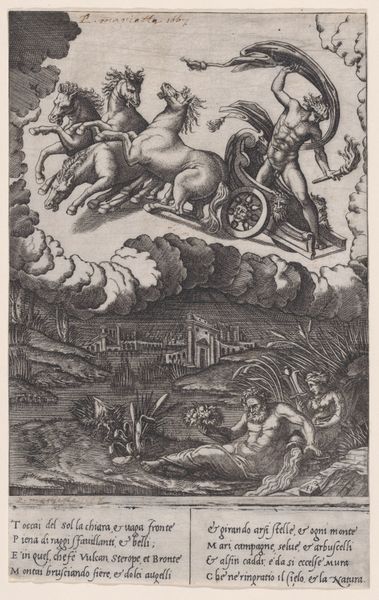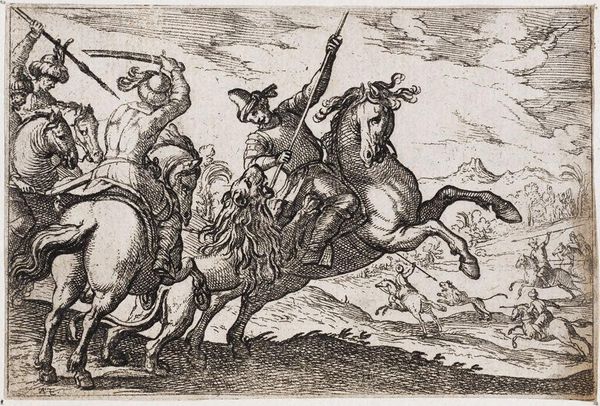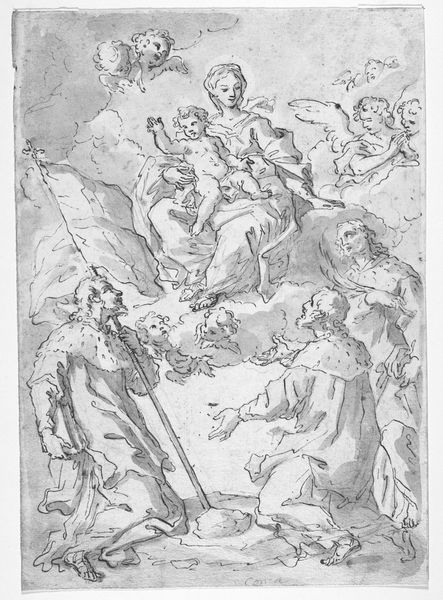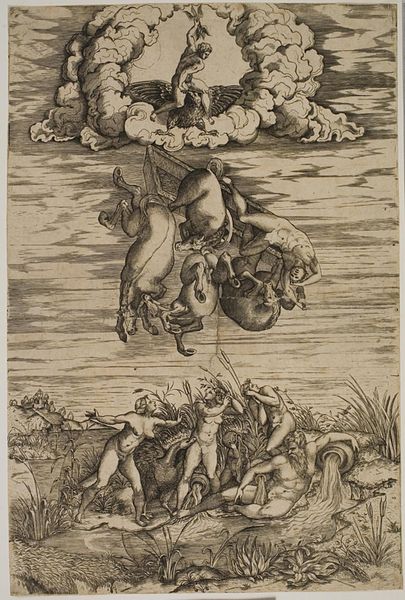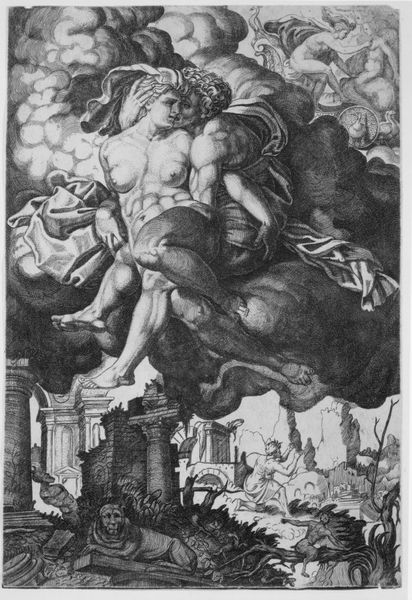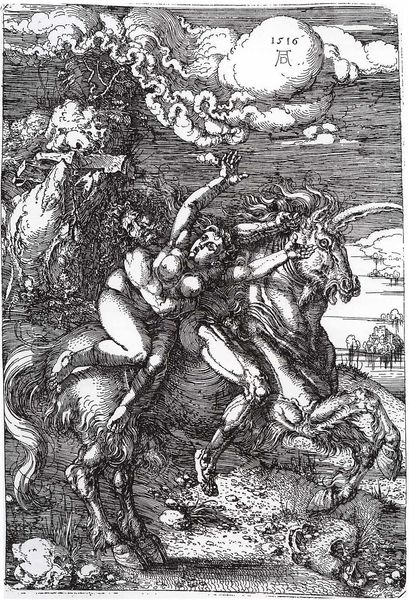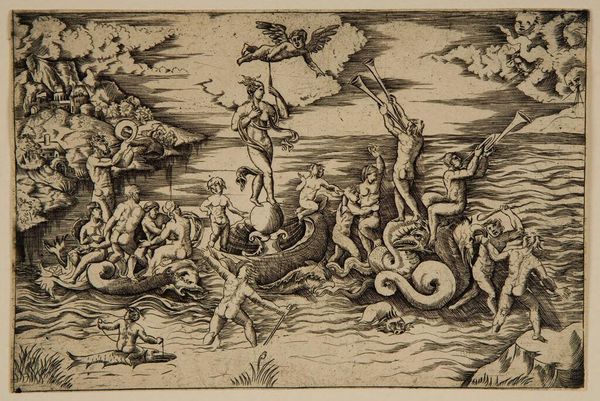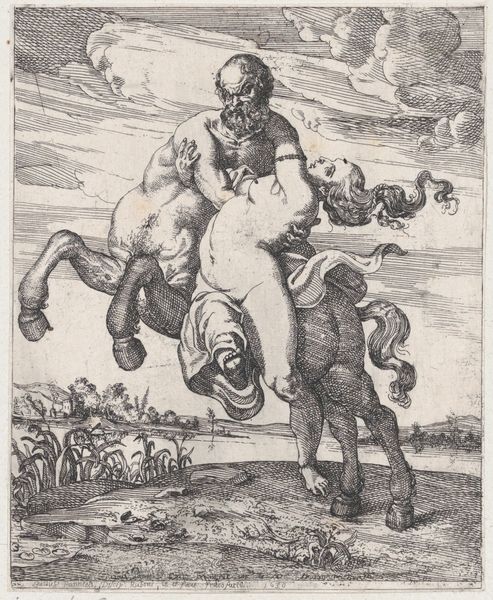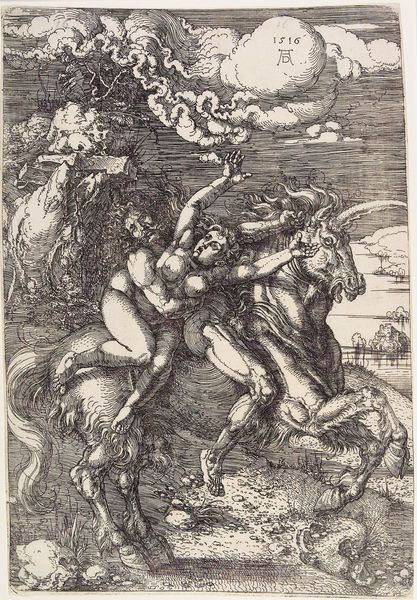
drawing, print, ink, engraving
#
drawing
#
ink drawing
#
allegory
# print
#
landscape
#
mannerism
#
figuration
#
11_renaissance
#
female-nude
#
ink
#
horse
#
pen work
#
history-painting
#
italian-renaissance
#
nude
#
engraving
#
male-nude
Dimensions: sheet: 16 1/8 x 11 1/16 in. (41 x 28.1 cm)
Copyright: Public Domain
Editor: This is "The Fall of Phaeton," an engraving from sometime between 1540 and 1566, by Nicolas Beatrizet. It’s such a dramatic scene, everyone is in freefall! The figures are so detailed considering the entire piece is in ink. What can you tell me about it? Curator: Considering this print depicts the Fall of Phaeton, we must look at the very *material* of its making – the labour of engraving. Each line meticulously etched into a metal plate speaks to a specific process. Notice how the density of lines creates tonality and depth. Editor: So the process is vital to understanding the work? Curator: Absolutely. The story itself – Phaeton's disastrous attempt to drive the sun chariot – speaks to a very specific relationship between humanity and the divine, but the print *democratizes* that narrative through mass production. Engravings were relatively affordable, making grand narratives accessible. How might this accessibility affect the message? Editor: I guess that takes some of the elitism out of it; more people could view and interpret it. So, this engraving acted as a tangible medium, in every sense of the word? It connects people with the art through access and material? Curator: Precisely. Think about the socioeconomic context: owning an artwork, especially one depicting classical narratives, conferred a certain status. Beatrizet's print made such visual culture far more accessible. Editor: I never thought about the act of making art relating to the art's value like that. Curator: This changes how we read "The Fall of Phaeton." It's no longer just about hubris; it's about production, distribution, and the consumption of art by a broader audience. Editor: That really gives me a new perspective on prints. Thanks!
Comments
No comments
Be the first to comment and join the conversation on the ultimate creative platform.
